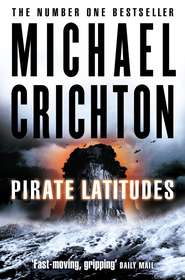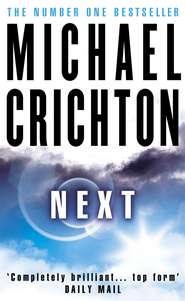По всем вопросам обращайтесь на: info@litportal.ru
(©) 2003-2024.
✖
Micro
Настройки чтения
Размер шрифта
Высота строк
Поля
“Yes,” Peter said.
“They haven’t given up, lost hope…”
“Quite the contrary,” Peter said. “It seems they’re taking a new interest in Eric’s boat. Something about a missing cell phone? One that may have broken up inside the engine compartment? I didn’t really follow what they told me.”
“A cell phone in the engine compartment?” Vin frowned. “I wonder what that could—”
“As I said, I didn’t really follow,” Peter said. “I don’t know why they would think there was a phone there. Perhaps my brother dropped his…I don’t know. But they’re also going to check phone records.”
“Phone records. Ah yes. Good, good. No stone unturned.”
Had Vin turned paler? Peter couldn’t be sure.
Alyson licked her lips nervously. “Were you able to sleep, Peter?”
“Yes, thanks. I took a pill.”
“Oh good.”
“Well.” Vin Drake rubbed his hands, turned to the others. “At any rate, welcome to the Manoa Valley. What do you say we get to the business at hand? Gather round, people, and I will give you your first insight into how Nanigen works.”
Drake led them from the parking lot toward the forest. They passed a low shed housing earth-moving machinery, although, as Drake said, “You’ve probably never seen machines like this before. Notice how small they are.” To Peter, the machines looked like tiny golf carts fitted with a miniature backhoe, with an antenna drooping over the top. “These diggers,” Drake went on, “are specially manufactured for us by Siemens Precision AG, a German company. The machine is able to precision-dig soil with millimeter accuracy. Which is then placed in the flats you see in the back of the shed. Those flats are thirty centimeters square—about a foot square—and either three or six centimeters deep.”
“And what about the antenna?”
“As you see, the antenna hangs directly over the backhoe. The antenna enables us to locate precisely where to dig and to keep a record in our data files of the exact place where the sample of soil came from. This will all be clear as the day goes on. Meanwhile let’s look at the site.”
They plunged into the forest itself, the ground suddenly uneven beneath their feet, the trail narrow and twisting among the giant trees overhead. The massive trunks were wrapped with broad-leaf vines; the ground was covered with plants and bushes to knee height, and the overall impression was of a thousand shades of green. The light filtering through the tree canopy overhead was pale yellow-green.
Drake began, “This may look like a natural rain forest…”
“It doesn’t,” Rick Hutter said. “And it’s not.”
“That’s correct. It’s not. This area has been cultivated since the 1920s, when it was an experimental station for Oahu farmers, and more recently for ecological studies run by the university. But in recent years nobody has bothered with this tract, and the land reverted to a more natural state. We call this area Fern Gully.” He turned and walked down the trail while the students followed him, going slowly and looking at things, occasionally stopping to examine a plant or flower.
“Moving along now,” Drake went on, speaking briskly, “you’ll notice a profusion of ferns. Prominently around us you see the big tree ferns, Cibotium and Sadleria, and lower down to the ground, the smaller Blechnum, Lycopodium, and of course—” he indicated the mountainside with a swipe of his hand—“up there, the uluhe ferns, which cover the mountain slopes over much of Hawaii.”
“You missed that uluhe fern right at your feet,” Rick Hutter broke in. “It’s called Dicranopteris, also known as false staghorn.”
“I believe so,” Vin Drake said, barely concealing a flash of irritation. He paused, and bent down on one knee. “The pe‘ahi ferns line this path, the larger ones are maku‘e ferns, which spiders like to live on. You will notice the large number of spiders here. Some twenty-three species, in all, are represented in this small area alone.” He stopped in a clearing, where trees opened into views of the mountainsides around the valley. He pointed up to a peak on a ridge overlooking the valley. “That peak is called Tantalus. It’s an extinct volcanic crater that looks down on this valley. We’ve been conducting research at Tantalus Crater, as well as here in the valley.”
Alyson Bender fell into step alongside Peter Jansen. “Did the police contact you today?” she said.
“No,” he said. “Why?”
“I wondered how you knew they were searching the boat…and the phone records.”
“Oh.” In truth, he had made that up. “Well. It was on the news.”
“Was it? I didn’t hear. What channel?”
“I don’t remember. Five, I think.”
Rick Hutter came over and said, “Really sorry, Peter. Really sorry, man.”
Jenny Linn had been walking close behind Vin Drake, and she said to him, “But I don’t understand your research program—like what you’re actually doing here in this forest.”
Drake smiled at her and said, “It’s because I haven’t explained it yet. In simple terms, we’re planning to collect samples from a cross-section of the Hawaiian ecosystem, from Tantalus Crater down into the Manoa Valley, where we’re standing.”
“Collect what kind of samples?” Rick Hutter said, hands on his hips. He was wearing the usual Rick outfit, jeans and an outdoor shirt, sleeves rolled up and now damp with sweat, looking as if he was on a bushwhack through deep jungle. He had the usual combative look on his face, too, his jaw set, eyes narrowed.
Drake smiled and answered, “Essentially we will collect samples from every species of living thing in this ecosystem.”
“What for?” Rick went on. He stared straight at Vin Drake.
Drake stared right back at Rick. A cold look. Then smiled. “A rain forest is the greatest repository of active chemical compounds in nature. We are standing in the middle of a gold mine full of potential new drugs. Drugs that could save uncounted human lives. Drugs worth uncounted billions of dollars. This forest, Mr., uh—”
“Hutter,” Rick said.
“This lush forest, Mr. Hutter, contains keys to the health and well-being of every person on this planet. And yet this forest has barely been explored. We have no idea what chemical compounds actually exist here, in the plants, in the animals, in the microscopic life-forms. This forest is terra incognita, absolutely unknown terrain. It’s as vast, as full of riches, and as unexplored as the New World was for Christopher Columbus. Our goal, Mr. Hutter, is simple. Our goal is drug discovery. We’re searching for new drugs on a vast scale beyond anything imagined. We have begun a total screening of this entire forest for bioactive compounds, from Tantalus to the bottom of this valley. The payoff will be huge.”
“ ‘The payoff,’ ” Rick echoed. “ ‘Gold mine.’ ‘New World.’ So it’s a gold rush you’re talking about, isn’t it, Mr. Drake? It’s all about money.”
“That’s much too crude,” Drake answered. “First and foremost, medicine is about saving lives. It’s about ending suffering and helping every person reach their human potential.” He switched his attention to the others, and began walking along the trail, getting himself away from Rick Hutter, who obviously annoyed him.
Rick, now standing with his arms folded, murmured to Karen King, “The guy is a modern Spanish conquistador. He’s looting this ecosystem for gold.”
Karen gave him a scornful look. “And just what are you doing with your natural extracts, Rick? You’re boiling the hell out of tree bark looking for new drugs. Why is that any different?”
“The difference,” he said to her, “is the huge sums of money involved. And you know where the money in all this is, right? It’s in patents. Nanigen will take out thousands of patents on the compounds they find here—and giant drug companies will exploit the patents, earning billions—”
“You’re just jealous ’cause you don’t have any patents.” Karen turned away from Rick, while Rick glared at her.
He called after her, “I’m not doing science to get rich. Unlike you, apparently…” He realized she was ignoring him. Pointedly.
Danny Minot struggled at the tail end of the group. For some reason, Danny had brought his tweed jacket to Hawaii, and he was wearing it now. Sweat poured down Danny’s neck and drenched his button-down shirt, and he skidded from place to place on the trail in tassel loafers. He blotted his face with a pocket square and pretended to ignore his misery. “Mr. Drake,” he said, “if you happen to be familiar with post-structuralist theory—uh—you might be aware of how—ugh—whoof!—how we can’t actually know anything about this forest…For you see, we create meaning, Mr. Drake, when really there is no meaning in nature…”
Drake seemed unfazed by Danny. “My view of nature, Mr. Minot, is that we don’t need to know the meaning of nature in order to make use of it.”
“Yes, but…” Danny went on.
Meanwhile, Alyson Bender drifted back a few paces, and Peter ended up walking with Rick. Rick nodded toward Vin Drake. “Do you believe this guy? He’s like Mr. Biopiracy.”
“I’ve been listening to your remarks, Mr. Hutter,” Drake said, twisting his head around suddenly, “and I have to say it’s completely false. Biopiracy refers to the taking of indigenous plants without compensating the country of origin. The concept is attractive to the ill-informed do-gooder but fraught with practical difficulty. Take the example of curare, a valuable medicinal drug, used in modern medicine today. Surely someone should be compensated? Yet there are dozens of different recipes for curare, developed by many tribal groups stretching across Central and South America—a vast area. The curares differ in ingredients and cooking time, depending on what is meant to be killed, and on local preferences. How, then, do you compensate native medicine men? Did the shamans of Brazil do more valuable work than the shamans of Panama or Colombia? Does it matter that the trees used in Colombia migrated—or were transplanted—from native Panama? What about the actual formula? Is the addition of strychnos important or not? How about the addition of a rusty nail? Is there any consideration for public domain? We allow a drug company twenty years to exploit a drug, then make it public. Some say Sir Walter Raleigh brought curare back to Europe in 1596; certainly it was well known in the 1700s. Burroughs Wellcome sold curare tablets in the 1880s for medical purposes. So by all odds, curare belongs in the public domain. And finally, modern surgeons no longer use curare from native plants anyway. They use synthetic curare. You see the complexities?”
“This is all corporate evasiveness,” Rick said.
“Mr. Hutter, you seem to enjoy being the devil’s advocate against my points,” Drake said. “I don’t mind. It helps me sharpen my arguments. The truth is, using natural compounds for medicine is just the way of the world. The discoveries of every culture are valuable, and all other cultures borrow from one another. Sometimes discoveries are traded for a price, but not always. Should we license the horse stirrup from the Mongols who invented it? Should we pay the Chinese for domesticated silk production? For opium? Should we track down the modern descendants of Neolithic farmers of ten thousand years ago who first domesticated food crops in the fertile crescent, and pay them? How about the medieval Britons who learned to smelt iron?”
Другие электронные книги автора Michael Crichton
Pirate Latitudes




 2.67
2.67
Next




 4.67
4.67







